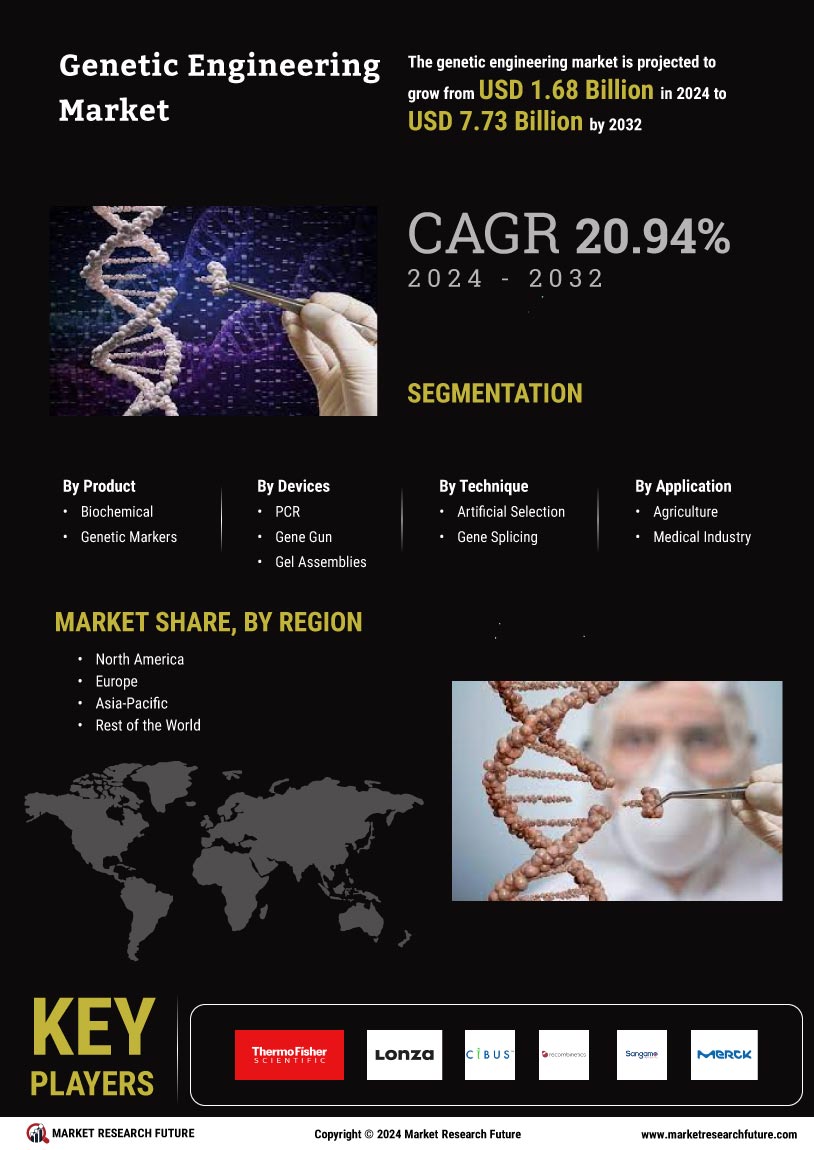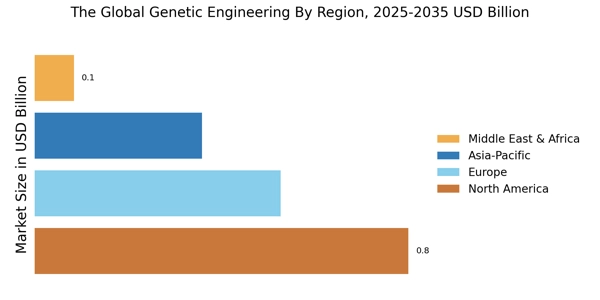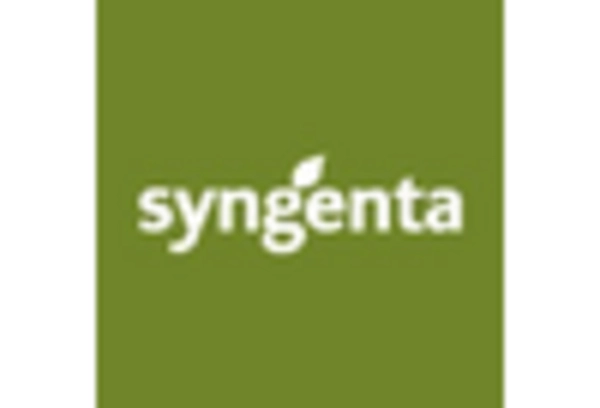Growing Investment in Biotechnology Research
Investment in biotechnology research is a significant driver of The Global Genetic Engineering Industry. Governments and private entities are increasingly allocating funds to support research initiatives aimed at developing novel genetic engineering applications. For instance, funding for agricultural biotechnology research has seen a marked increase, with investments reaching over USD 5 billion annually. This financial backing facilitates the exploration of new genetic engineering techniques and the development of products that can address pressing global challenges, such as climate change and food security. As research continues to advance, The Global Genetic Engineering Industry is likely to benefit from a steady influx of innovative solutions that enhance productivity and sustainability.
Rising Demand for Genetically Modified Organisms
The increasing demand for genetically modified organisms (GMOs) is a pivotal driver in The Global Genetic Engineering Industry. As populations grow, the need for enhanced agricultural productivity becomes paramount. GMOs are engineered to exhibit traits such as pest resistance and improved nutritional content, which can lead to higher crop yields. According to recent data, the market for GMOs is projected to reach USD 40 billion by 2025, reflecting a compound annual growth rate of approximately 10%. This surge is largely attributed to the agricultural sector's quest for sustainable solutions to food security challenges. Consequently, The Global Genetic Engineering Industry is witnessing a robust expansion as stakeholders seek innovative ways to meet consumer demands and environmental sustainability goals.
Technological Innovations in Genetic Engineering
Technological advancements play a crucial role in shaping The Global Genetic Engineering Industry. Innovations such as CRISPR-Cas9 and other gene-editing technologies have revolutionized the field, enabling precise modifications at the genetic level. These technologies not only enhance the efficiency of genetic engineering processes but also reduce the time and costs associated with research and development. The market for gene editing technologies is expected to grow significantly, with estimates suggesting a valuation of USD 10 billion by 2026. This growth is indicative of the increasing adoption of these technologies across various sectors, including agriculture, healthcare, and industrial biotechnology. As a result, The Global Genetic Engineering Industry is poised for substantial growth driven by these cutting-edge innovations.
Consumer Acceptance of Genetically Engineered Products
Consumer acceptance is a vital factor influencing The Global Genetic Engineering Industry. As awareness of the benefits of genetically engineered products grows, consumers are becoming more receptive to their use. This shift in perception is crucial for the market's expansion, as it encourages manufacturers to invest in the development of genetically modified foods and other products. Surveys indicate that approximately 60% of consumers are willing to purchase genetically modified foods if they are proven to be safe and beneficial. This growing acceptance is likely to drive demand, leading to increased production and innovation within The Global Genetic Engineering Industry, ultimately fostering a more sustainable food system.
Regulatory Support for Genetic Engineering Initiatives
Regulatory frameworks are increasingly supportive of genetic engineering initiatives, serving as a key driver in The Global Genetic Engineering Industry. Governments worldwide are recognizing the potential benefits of genetic engineering in addressing food security and environmental challenges. As a result, many countries are streamlining their regulatory processes to facilitate the approval of genetically modified products. For example, the European Union has recently proposed reforms aimed at expediting the approval of gene-edited crops. Such regulatory support not only encourages innovation but also instills confidence among investors and stakeholders in The Global Genetic Engineering Industry. This trend is likely to enhance the market's growth prospects as more products gain regulatory approval.


















Leave a Comment